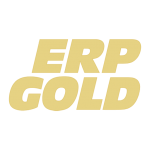Accounting and finance are related but not equal. All companies, whether they are manufacturers, wholesalers, distributors, or retailers utilize both. Simply put, Accounting is the study of how information is gathered and distributed. Finance, broadly, is the study of how companies make the investment and financing decisions they have to make in order to operate their business.
Finance needs accounting information in order to operate and accounting must have the financial information in order to translate accounting information for decision making. There are three major types of accounting:
- Financial Accounting:
Financial accounting is the area of accounting concerned with external parties interested in the business (your investors and your creditors). In the US, companies follow GAAP (Generally Accepted Accounting Practices) which are set forth by FASB (Financial Accounting Standards Board). Financial accounting is looking at the company at a high level to make sure it is profitable. Since the accounting principles are monitored, their accuracy is crucial. It is recommended that companies use accounting software to complete financial statements. ERP Gold’s Accounting module complies with GAAP for financial statements.
Financial statements are produced for the benefit of your external investors. Investors rely on the review of financial statements such as the income statement, the balance sheet, and the statement of cash flows in order to determine whether they should or should not invest in the business or remain invested in the company.
Financial statements are of interest to another group of external individuals and those are the creditors of the company. Those creditors are either the bondholders of the company or they could be the debtholders of the company. These creditors are individuals or companies who have loaned money to the firm and are interested in receiving a return on their investment and, eventually, a return of their principal.
The advantages of financial accounting include demonstration of the company’s profitability, the consistency of financial reporting, and the performance analysis.
- Managerial Accounting:
Managerial accounting is the second type of accounting. It is an area of accounting associated with gathering and preparing financial information for inside business organizations such as managers and staff so they can make informed decisions. Managerial accounting reports are at a greater depth than the financial accounting reports, such as at the product level.
If compared to financial accounting which is concerned with information for external individuals. Managerial accounting is the field where the gathering and preparation of financial information is for the insiders of the firm.
A simple example of managerial accounting could be: For company A, it costs $10 to produce a widget. They can sell that widget on Amazon for $20, therefore the margin is 50%. If the cost to produce the widget increases, Company A can analyze what the increase in cost will do to the margin and determine if they will raise the price on Amazon.
Managers use financial information to make better business decisions for their managerial and control roles. They use a variety of forecasting techniques such as variance analysis, risk management, and cost-volume-profit analysis to provide the best information so they can predict the future financial health of the company.
- Cost Accounting:
The last type of accounting is cost accounting. Some business professionals take cost accounting as a part of managerial accounting and some think that cost accounting is a different functional area of accounting. Whatever the case is, cost accounting and managerial accounting surely overlap.
Cost accounting looks at the costs of production for a business by looking at the fixed costs of the products and services they sell and their input costs. Input costs are compared to output costs for the measurement of the financial performance of the company with direct regards to the production costs. Cost elements often used are indirect costs or overhead, raw materials, and labor. Managers often use the information from cost accounting to establish cost control programs for their business firms.
In our example of Company A, cost accounting would provide details of the cost increase for producing the widget. Did the material cost increase, did the labor cost increase, etc. ERP Gold’s Inventory Control Software tracks costs at the costing level, allowing you to understand the cost drivers and trends, which in turn allows the company to make more knowledgeable decisions
As you have read, Accounting does not equal Finance, but they are intertwined in the aspects of business. You can’t have one without the other. The easiest way to determine the difference between them is in the audience they serve – Financial serves the outside, Managerial serves the inside management level and Cost serves the working level.

